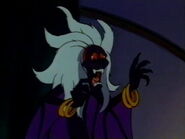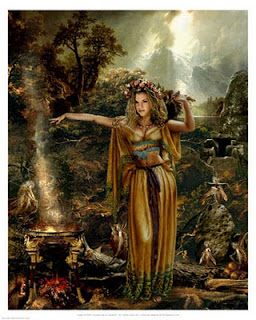==========Evil Gnomes===============
Today we take a trip to sunny California, beach's sun tans and surfing.
But California is also home to some odd and sometimes not so friendly cryptids, we all know of Bigfoot and a lot of you have probably heard of the Fresno Night Walkers(strange alien like cryptids with very small body's and really long legs - post on them soon)
But what's the first thing you think of when you hear the word Gnome?
For most of us it's those strange little men on your neighbors front lawn keeping a watchful eye on the garden.
But what if that creepy little figure wasn't so inanimate, what if by some slim chance, you happen too see it move....or even worst it tries to attack you.
Gnome's much like fairy's have been seen all over the world in some form or another, there were a few videos from Mexico that appear to show a gnome (duende) or at least a diminutive human like creature, You can still find them on youtube.
---Duende---
....................................................................
Gnome's are thought to dwell deep within the forests and mountains, making there homes underground or in caves and abandon mine shafts.
Though they have been known to frequent old abandon homes and buildings.
Most are thought of as kind or at least reclusive enough not to be a threat to humans, but just like humans there are good and bad gnomes.
==========================================================================================English Legend's about a vicious and even murderous gnome called a red cap, (They are Very similar to Goblins) this is a gnome you definitely don't want too meet!In the midelages they would make there homes in old abandon castles and towers and would kill anyone that entered there territory.
They look like a little old man. Are short in stature like all gnomes, have red eyes, sharp teeth and long finger nails and of course a long pointy red hat. the hat's are red because this vicious little creature has a nasty habit of dyeing there hats with the blood of there victims.American Indianans speak of legends involving a small and fierce tribe of little people.
===The Redcaps Gnome-===
===========================================
A burial site unearthed in Tennessee was said too contain at least 100,000, yes -- One Hundred Thousand, full grown body's no more the 3 feet or so in height.
===Tennessee Fairy Remains===
----------------------------------------------------------------------------
There have been several sightings along the Tully river in California.
These creatures for the most part seem too be some what foul tempered or even malevolent.
One California family experienced this terror first hand.
In 1999 a woman named Tammy Thomas and her family moved into an old farm house with an old unused shed in the back,at one point she began to notice a few of her duck's and other small animals go missing.
She believed there was something in the old shed, but never approached it out of fear of what was possibly inside.
Then one night after returning home from a trip to the store with her grandson, she was terrified too see what she describes as an "Evil Garden Gnome" cackling in the dark.she grabbed her grandson and and ran to the house, once inside she could still hear noises on the porch and when she opened the curtains and to her horror the creature was staring back at her.
This incident frightened her, and fearing for the safety of herself and her grandchildren she eventually moved to a new home.
However people in that area still claim too see this odd little man from time to time, he is sometimes spotted moving lawn ornaments around in peoples yards, or catching and eating fish from the river or local ponds.
Some even say they hear him singing late at night. Another evil gnome like creature in California is called a Water Baby, it's a water dwelling creature, gnome like in appearance and if angered will sneak into your home and smother you.
They are said to live in the Tully river.California also has sightings of small hairy human like creatures that have been seen running across the road at night, So the next time you take a scenic hike through the forest of the golden state just remember Bigfoot may not be the only cryptid roaming the woods
........................................................................................................
On a side note California has one of the largest clusters of missing people in the country, Yosemite national park seems to be a real active location for disappearance, stay safe and hike/camp responsibly and always ALWAY's let some one know were you are planning on going. For more information on the strange disappearance check out The Missing 411 series by David Palides, very informative and well researched
.---------------------------------------------------------------------------------------------------



































